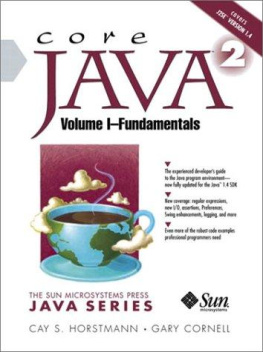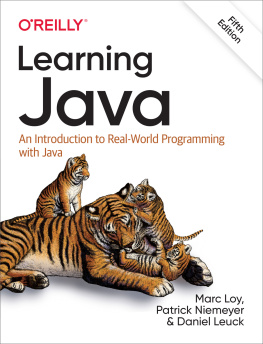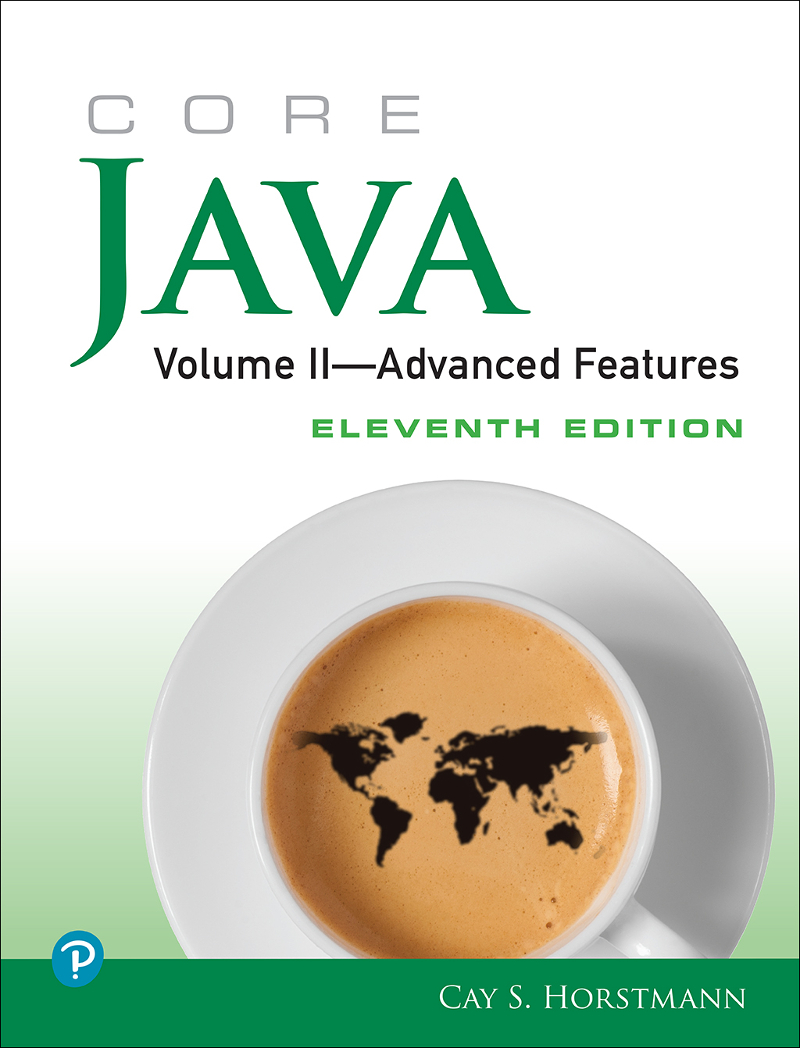EPUB is an open, industry-standard format for e-books. However, support for EPUB and its many features varies across reading devices and applications. Use your device or app settings to customize the presentation to your liking. Settings that you can customize often include font, font size, single or double column, landscape or portrait mode, and figures that you can click or tap to enlarge. For additional information about the settings and features on your reading device or app, visit the device manufacturers Web site.
Many titles include programming code or configuration examples. To optimize the presentation of these elements, view the e-book in single-column, landscape mode and adjust the font size to the smallest setting. In addition to presenting code and configurations in the reflowable text format, we have included images of the code that mimic the presentation found in the print book; therefore, where the reflowable format may compromise the presentation of the code listing, you will see a Click here to view code image link. Click the link to view the print-fidelity code image. To return to the previous page viewed, click the Back button on your device or app.
Core Java
Volume IIAdvanced Features
Eleventh Edition
Cay S. Horstmann
Boston Columbus New York San Francisco Amsterdam Cape Town
Dubai London Madrid Milan Munich Paris Montreal Toronto Delhi Mexico City
So Paulo Sydney Hong Kong Seoul Singapore Taipei Tokyo
The author and publisher have taken care in the preparation of this book, but make no expressed or implied warranty of any kind and assume no responsibility for errors or omissions. No liability is assumed for incidental or consequential damages in connection with or arising out of the use of the information or programs contained herein.
For information about buying this title in bulk quantities, or for special sales opportunities (which may include electronic versions; custom cover designs; and content particular to your business, training goals, marketing focus, or branding interests), please contact our corporate sales department at or (800) 382-3419.
For government sales inquiries, please contact .
For questions about sales outside the United States, please contact .
Visit us on the Web: informit.com
Library of Congress Preassigned Control Number: 2018963595
Copyright 2019 Pearson Education Inc.
Portions copyright 1996-2013 Oracle and/or its affiliates. All Rights Reserved.
Oracle America Inc. does not make any representations or warranties as to the accuracy, adequacy or completeness of any information contained in this work, and is not responsible for any errors or omissions.
Microsoft and/or its respective suppliers make no representations about the suitability of the information contained in the documents and related graphics published as part of the services for any purpose. All such documents and related graphics are provided as is without warranty of any kind. Microsoft and/or its respective suppliers hereby disclaim all warranties and conditions with regard to this information, including all warranties and conditions of merchantability, whether express, implied or statutory, fitness for a particular purpose, title and non-infringement. In no event shall Microsoft and/or its respective suppliers be liable for any special, indirect or consequential damages or any damages whatsoever resulting from loss of use, data or profits, whether in an action of contract, negligence or other tortious action, arising out of or in connection with the use or performance of information available from the services. The documents and related graphics contained herein could include technical inaccuracies or typographical errors. Changes are periodically added to the information herein. Microsoft and/or its respective suppliers may make improvements and/or changes in the product(s) and/or the program(s) described herein at any time. Partial screen shots may be viewed in full within the software version specified.
Microsoft Windows, and Microsoft Office are registered trademarks of the Microsoft Corporation in the U.S.A. and other countries. This book is not sponsored or endorsed by or affiliated with the Microsoft Corporation.
All rights reserved. This publication is protected by copyright, and permission must be obtained from the publisher prior to any prohibited reproduction, storage in a retrieval system, or transmission in any form or by any means, electronic, mechanical, photocopying, recording, or likewise. For information regarding permissions, request forms and the appropriate contacts within the Pearson Education Global Rights & Permissions Department, please visit www.pearsoned.com/permissions/.
ISBN-13: 978-0-13-516631-4
ISBN-10: 0-13-516631-4
1 19
Preface
To the Reader
The book you have in your hands is the second volume of the eleventh edition of Core Java, fully updated for Java SE 11. The first volume covers the essential features of the language; this volume deals with the advanced topics that a programmer needs to know for professional software development. Thus, as with the first volume and the previous editions of this book, we are still targeting programmers who want to put Java technology to work in real projects.
As is the case with any book, errors and inaccuracies are inevitable. Should you find any in this book, we would very much like to hear about them. Of course, we would prefer to hear about them only once. For this reason, we have put up a web site at http://horstmann.com/corejava with a FAQ, bug fixes, and workarounds. Strategically placed at the end of the bug report web page (to encourage you to read the previous reports) is a form that you can use to report bugs or problems and to send suggestions for improvements for future editions.
About This Book
The chapters in this book are, for the most part, independent of each other. You should be able to delve into whatever topic interests you the most and read the chapters in any order.
In , you will learn all about the Java stream library that brings a modern flavor to processing data, by specifying what you want without describing in detail how the result should be obtained. This allows the stream library to focus on an optimal evaluation strategy, which is particularly advantageous for optimizing concurrent computations.
The topic of ) let you deal, in a uniform manner, with communications among various sources of data, such as files, network connections, or memory blocks. We include detailed coverage of the reader and writer classes that make it easy to deal with Unicode. We show you what goes on under the hood when you use the object serialization mechanism, which makes saving and loading objects easy and convenient. We then move on to regular expressions and working with files and paths. Throughout this chapter, you will find welcome enhancements in recent Java versions.
covers XML. We show you how to parse XML files, how to generate XML, and how to use XSL transformations. As a useful example, we show you how to specify the layout of a Swing form in XML. We also discuss the XPath API, which makes finding needles in XML haystacks much easier.
covers the networking API. Java makes it phenomenally easy to do complex network programming. We show you how to make network connections to servers, how to implement your own servers, and how to make HTTP connections. This chapter includes coverage of the new HTTP client.






